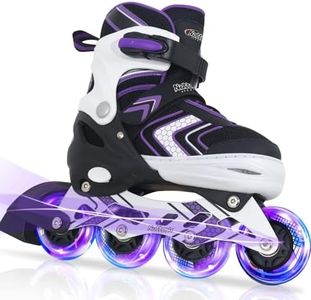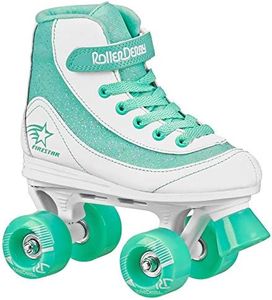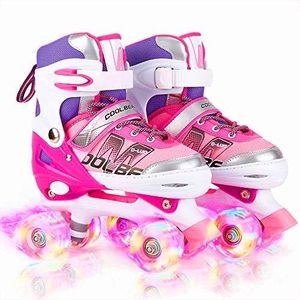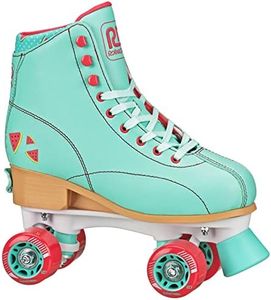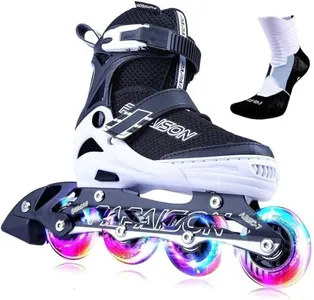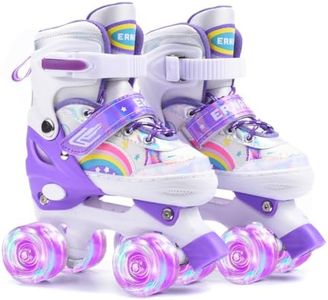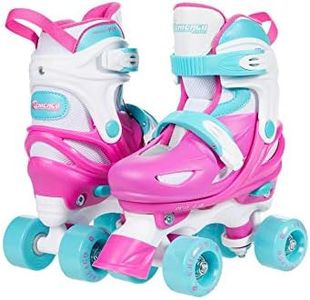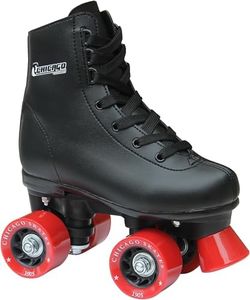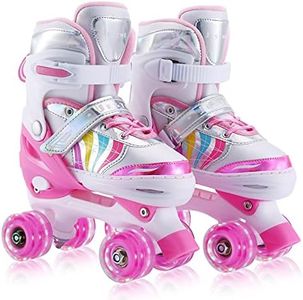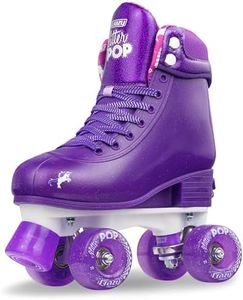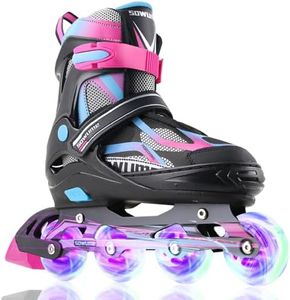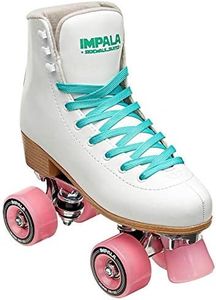We Use CookiesWe use cookies to enhance the security, performance,
functionality and for analytical and promotional activities. By continuing to browse this site you
are agreeing to our privacy policy
10 Best Kids Roller Skates
From leading brands and best sellers available on the web.Buying Guide for the Best Kids Roller Skates
Choosing kids' roller skates can be a delightful experience, but it's important to ensure you find the right pair that matches your child's age, skill level, and the activities they plan to do. Good roller skates should help your child have fun while staying safe and comfortable. Understanding key features makes the process much more straightforward, leading to a safer and more enjoyable skating experience.Sizing and AdjustabilitySizing refers to how well the skates fit your child’s feet. Roller skates that are too big or too small can cause discomfort and even lead to accidents. Some skates are adjustable, allowing them to be resized as your child grows. For younger or fast-growing children, adjustable skates are a practical choice, as they can be expanded by a size or two, extending their usability. If your child’s foot size is stable, traditional fixed-size skates may offer a snugger fit. Always ensure proper measurement of your child’s foot, and prioritize a snug but not tight fit—this prevents blisters and enhances control.
Boot Type: Hard Shell vs Soft BootThe boot type impacts comfort, support, and breathability. Hard shell boots offer more ankle protection and are supportive, making them ideal for beginners or children needing extra stability. Soft boots provide greater comfort and ventilation, which is good for longer sessions or gentler skating. For absolute beginners or if your child is likely to skate in rougher outdoor areas, start with hard shell boots. For more experienced or casual indoor skaters, soft boots might be more appealing for their lightness and flexibility.
Wheel Size and HardnessWheel size and hardness affect how fast and smoothly your child can skate, as well as how stable the skates feel. Larger wheels roll faster but can be harder to control, so smaller wheels are generally better for beginners since they offer more stability and slow things down a bit. Harder wheels are better on smooth indoor surfaces because they last longer, while softer wheels grip better outdoors and absorb bumps. Think about where your child will skate most—indoors or outdoors—and pick wheel size and softness accordingly for safer, easier learning.
Closure SystemThis refers to how the skates are fastened onto the feet, such as with laces, Velcro straps, buckles, or a combination. Laces allow for a more custom fit, while Velcro and buckles are quicker and easier for younger children to manage themselves. For younger or less experienced skaters, closure systems that are simple and secure can make things easier and safer. Older kids or more advanced skaters might appreciate the adjustability of laces combined with extra straps.
Safety FeaturesSome roller skates include safety features like reinforced toe caps, extra padding, or reflective elements for visibility. These features make a big difference in preventing injuries, providing comfort, and keeping your child visible in low-light situations. Prioritize safety features especially if your child is a beginner, plans to skate outdoors, or will be skating in areas with more people or obstacles.
Weight and Build QualityThe overall weight and construction quality of the skates impact both comfort and durability. Lighter skates allow for easier movement and less fatigue for young kids, but they should still feel sturdy and well-made to withstand frequent use and occasional tumbles. Aim for skates that balance strength with a manageable weight, aligning with your child’s age, build, and intended frequency of skating.
